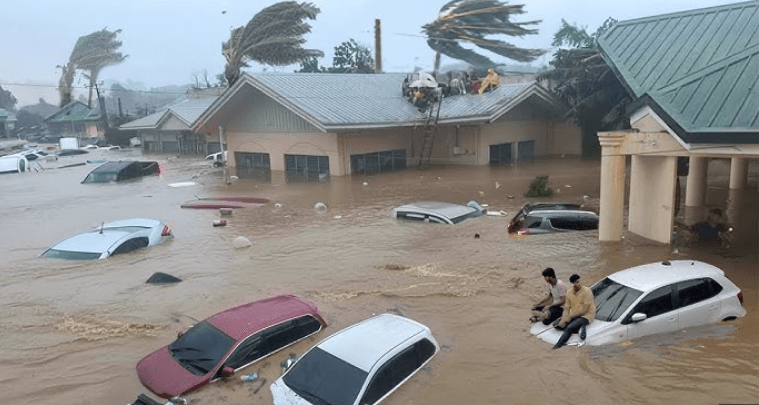
MANILA, Philippines — Super Typhoon Fung-wong, locally known as Uwan, made landfall in northeastern Luzon on November 9, 2025, bringing sustained winds exceeding 180 km/h and gusts up to 230 km/h. Torrential rains caused widespread flooding, landslides, and storm surges across several provinces.
Authorities report that over 1.4 million people have been displaced, with multiple evacuation centres established to provide shelter, food, and basic necessities. At least two fatalities have been confirmed, with additional injuries reported.
The storm follows Typhoon Tino (international name: Kalmaegi), which earlier in November affected the Visayas region and left more than 200 people dead.
Flooding has submerged residential areas, agricultural land, and major transportation routes, with several highways reported under water. Landslides in hilly provinces blocked roads, complicating relief efforts. Power outages and communication disruptions have been reported in multiple municipalities.
Evacuation centres across affected provinces are accommodating displaced families. National and local agencies are actively distributing food, water, and medical supplies while monitoring water levels in rivers and drainage systems.
The National Disaster Risk Reduction and Management Council (NDRRMC) and local government units coordinated preemptive evacuations and relief measures ahead of the typhoon’s arrival. Emergency operations included alerting residents in high-risk areas, deploying rescue teams, and securing evacuation centres.
At the same time, ongoing investigations into flood-control projects have placed billions in public spending under scrutiny. Several infrastructure initiatives intended to mitigate flooding remain incomplete or delayed, prompting lawmakers and watchdog groups to call for greater transparency and accountability in disaster management funds.
Experts note that while early warning systems and evacuation procedures are in place, recurring floods continue to affect urban and rural communities, highlighting systemic challenges in infrastructure, planning, and implementation.
Typhoon Fung-wong has renewed public attention on how government planning and resource allocation influence the impact of natural disasters. Lawmakers have requested detailed reports from agencies managing flood-control and drainage projects, seeking to understand delays and gaps in implementation.
The Philippine government has pledged continued assistance to affected areas, including additional personnel, equipment, and relief supplies. Authorities emphasize that coordinated efforts between national and local agencies remain critical to reducing risks and ensuring the safety of residents.
As floodwaters recede, the focus shifts to rebuilding and assessing the effectiveness of disaster preparedness measures. Communities, local officials, and national agencies face the challenge of strengthening infrastructure, improving evacuation processes, and ensuring transparency in project execution.
Typhoon Fung-wong underscores that while tropical cyclones are natural hazards, their human impact is shaped by policy, governance, and the ability of institutions to respond effectively. The coming weeks will test the resilience of both communities and governmental systems in the Philippines.
Lorem ipsum dolor sit amet, consectetur adipiscing elit. Suspendisse varius enim in eros elementum tristique. Duis cursus, mi quis viverra ornare, eros dolor interdum nulla, ut commodo diam libero vitae erat. Aenean faucibus nibh et justo cursus id rutrum lorem imperdiet. Nunc ut sem vitae risus tristique posuere.